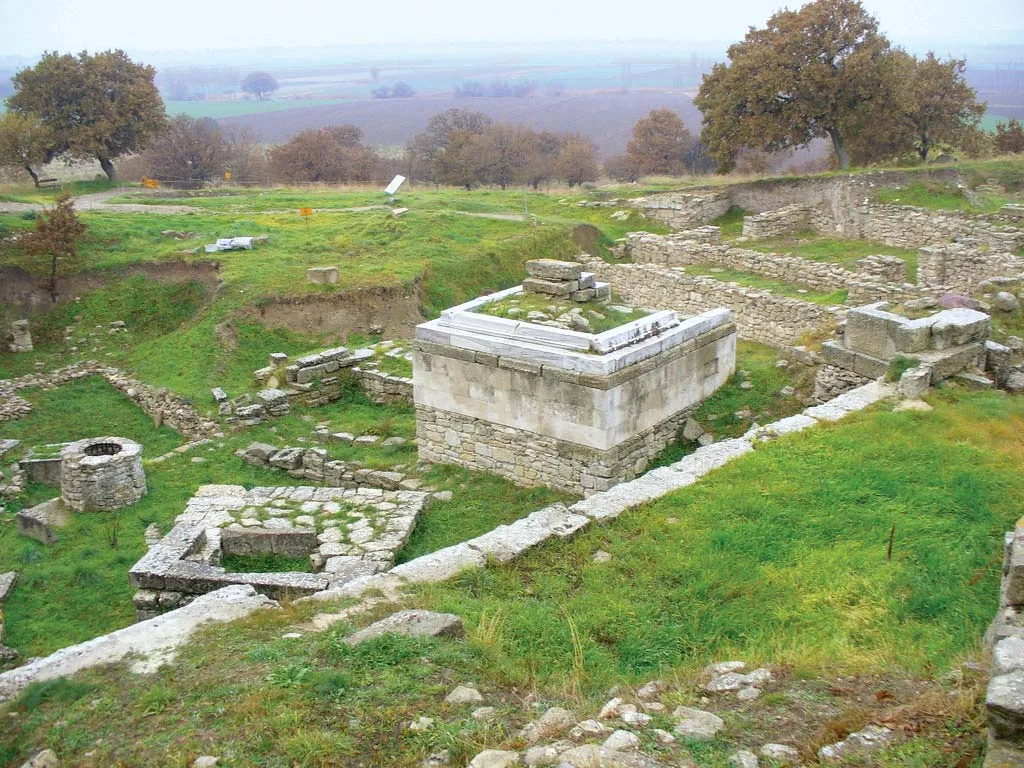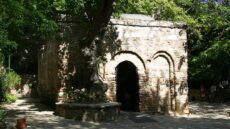Troy Antique City

Troy, an ancient Ionian city located in the northeastern part of Asia Minor, was originally established by the Hittites. It was initially known as Wilusa or Truwisa but gained its most famous name, Troy. Renowned ancient historian and writer Homer immortalized the Trojan War in his epic poems, the Iliad and the Odyssey, making it one of the most popular subjects in Greek drama.
According to Homer‘s accounts, Agamemnon, the powerful king of Greece, resided in Mycenae and was married to Clytemnestra, the daughter of Tyndareus of Sparta. Agamemnon’s brother, Menelaos, married Clytemnestra’s sister, Helen, who was renowned as the most beautiful woman in the world. Consequently, Menelaos ascended to the throne of Lakonia.
In Troy, King Laomedon ruled over Ilios. However, he attempted to deceive the gods, leading to an attack by Herakles, who killed Laomedon, the son of Ilus. Laomedon’s youngest son, Podarces, was spared and given the name Priam. He became the ruler of Troy for three generations and had fifty sons and twelve daughters. His sons Hector and Paris played pivotal roles in the history of Troy.
The tale of the Trojan War began when the goddess of discord, Eris, tossed an apple into the crowd during the wedding of Peleus and Thetis. The apple was inscribed for the fairest woman in the world. Unable to decide between Hera, Athena, and Aphrodite, Zeus declared that Paris, the prince of Troy and considered the most beautiful man alive, would be the judge. The goddesses traveled to Mount Ida to meet Paris. Hera offered him lordship over all of Asia, Athena promised him victory and wisdom, while Aphrodite tempted him with the most beautiful woman in the world. Paris chose Aphrodite and subsequently fell in love with Helen. He abducted her and sailed to Troy. Some sources claim that Helen willingly eloped with Paris, taking a significant portion of her husband’s wealth. Learning of Helen’s capture, Menelaos gathered a formidable army, including renowned warriors such as Achilles, Odysseus, and Ajax, and set sail for Troy.
Homer’s narrative primarily focuses on the climactic battles between the Greeks and Trojans. Hector killed Patroclus, Achilles’ best friend, but was later slain by Achilles in a one-on-one combat. Paris, using his bow and arrow, fatally wounded the mighty warrior Achilles. Ajax tragically took his own life with a silver sword. Paris, in turn, was killed by Philoktetes. However, the Trojans refused to return Helen to the Greeks. Consequently, the Greeks devised the famous Trojan Horse—a large wooden structure. Concealed inside the horse were their most skilled warriors. The Greeks left the horse outside the city gates as a supposed offering to Athena. The Trojans, unaware of the hidden soldiers, brought the horse inside the city. During the night, the Greek warriors emerged from the horse, overpowered the Trojans, and captured the city. They ruthlessly slaughtered every male inhabitant, leaving none alive. The Greeks reclaimed Helen and began their journey back to Greece, which would be fraught with misfortune. They encountered various setbacks, losing numerous warriors at sea and facing other unfortunate events. Agamemnon, in particular, met his demise at the hands of his wife.
Until 1868, many believed that the story of Troy was merely a product of Homer’s vivid imagination. However, in 1865, English archaeologist Frank Calvert conducted excavations on his newly acquired land in Hisarlik, Canakkale. Calvert’s findings provided compelling evidence that the Trojan War was not just a mythical tale but had indeed taken place. Excited by his discoveries, Calvert shared his findings with Heinrich Schliemann, a German businessman and archaeologist known for his treasure hunting exploits. Inspired by Calvert’s excavations, Schliemann embarked on his own excavation efforts in the same area, ultimately uncovering the ancient city of Troy. However, due to his amateur methods, Schliemann inadvertently caused significant damage to the site, compromising many aspects of the ancient city’s preservation. Despite this, he managed to reveal several layers of Troy, shedding light on its complex history.
The city of Troy comprises nine layers that date back to 3000-2600 BC. The earliest settlement at the site was established in the 3rd millennium BC, and ongoing excavations continue to deepen our understanding of its evolution and significance.
The exploration and excavation of Troy have been an ongoing endeavor, allowing researchers and archaeologists to piece together the puzzle of this ancient city’s past. By unearthing artifacts, structures, and remnants of past civilizations, these efforts have contributed significantly to our knowledge of Troy and its historical context. The site stands as a testament to the enduring legacy of the Trojan War, as immortalized by Homer’s epic poems, and continues to captivate visitors and scholars alike with its rich archaeological treasures.






